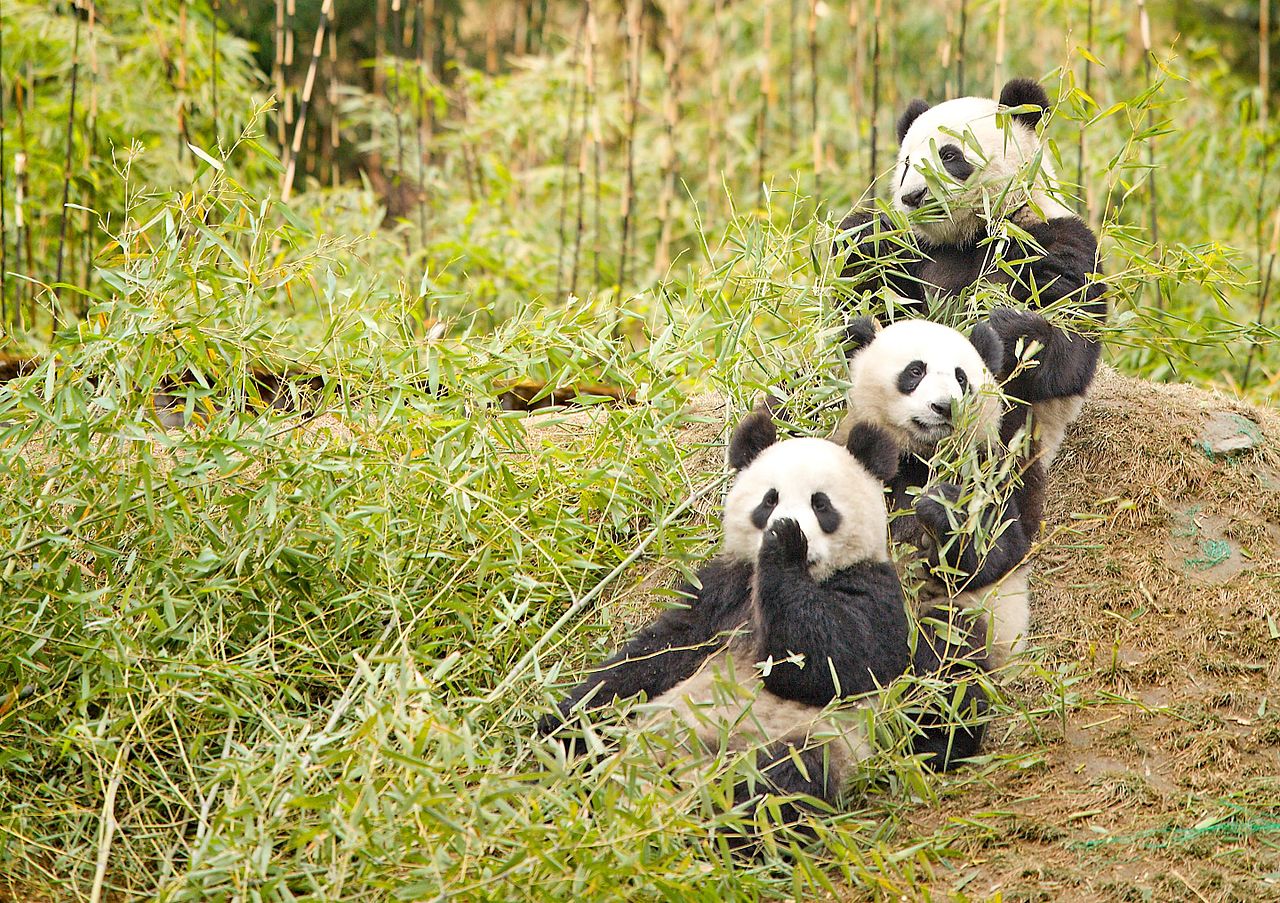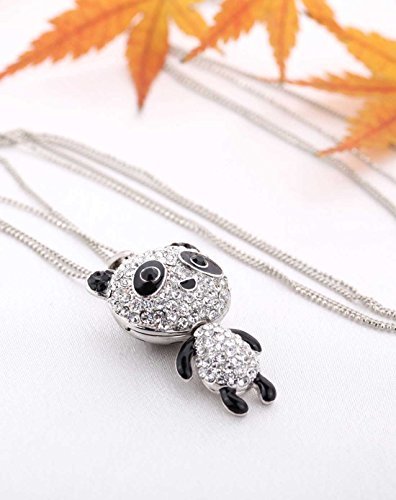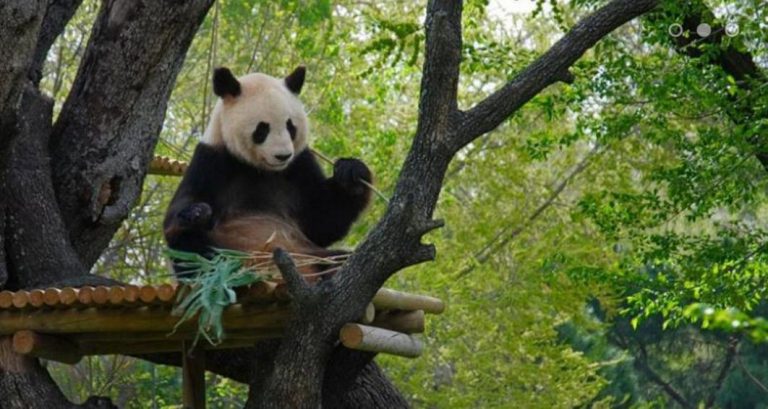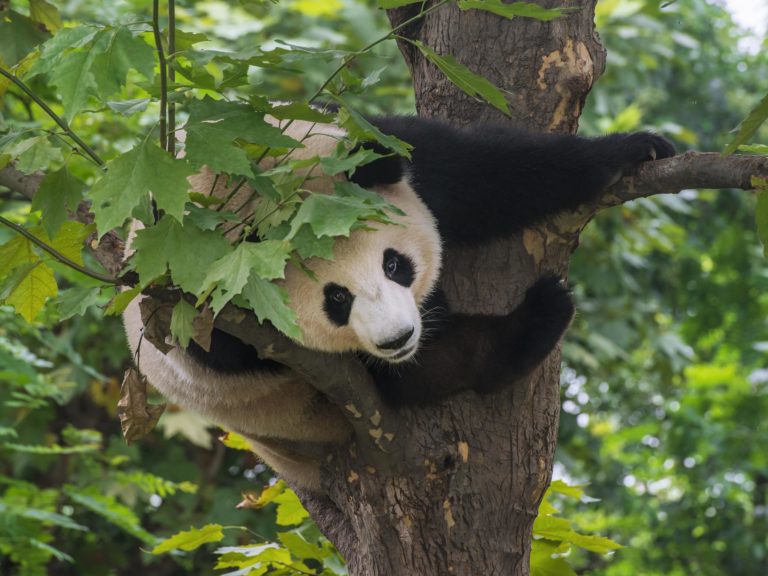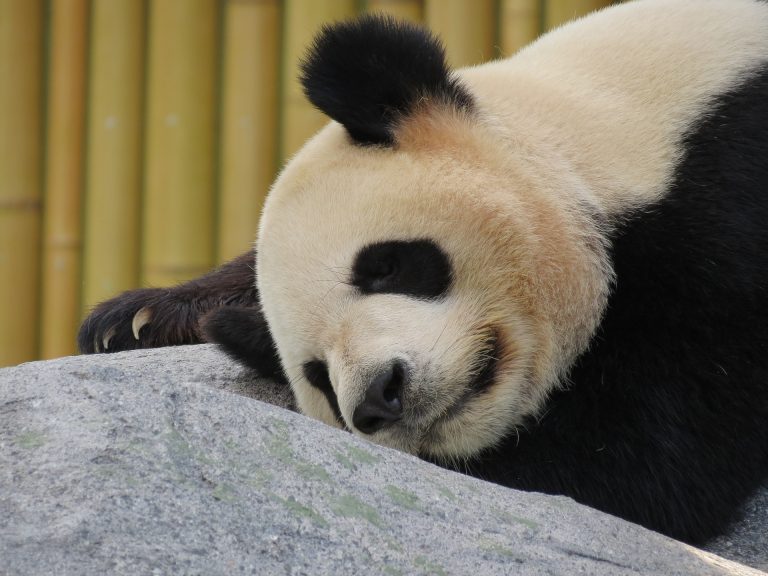A Brief History of the Giant Panda
A brief look at the history of the giant panda and how it became so popular worldwide.

The giant panda, or ‘black and white cat-foot’ (going by its scientific name Ailuropoda melanoleuca), is a well-known animal worldwide. In fact, there are few other animals alive today that generate as much attention or command as much care as this mammal does.
But why is that so?
After all, it doesn’t seem to do much and spends most of its day and a chunk of its lifetime collecting and chewing bamboo.
So, why all the fuss and excitement about these creatures anyway? Well, apart from its appealing and cuddly appearance, they can be interesting to watch. Also, this is an animal that suffered so much persecution from human activities that there are now just under 2,000 individuals surviving in the wild.
Here’s a look at the history of the giant panda and its significance in its native habitat.
Tracing The Roots Of the Giant Panda
The giant panda is a highly specialized animal and it has been able to adapt to its unique habitat deep in the bamboo forests of Sichuan, China. Due to these adaptations, it has lived in these bamboo forests for millions of years now.
The giant panda’s ancestry has been the subject of debate for decades. It shares striking characteristics in common with raccoons and bears so it was quite a challenge to classify it. Eventually, molecular research put it squarely in the same family as bears. Thus, it is a bear.
Its closest relative today is the spectacled bear but there is a more distant relationship with the red panda. For the fact that it separated so early from other bear species and is now in a category of its own, it’s often referred to as ‘living fossil.’
Interestingly, the name panda originally refers to the lesser-known red panda. Therefore to avoid confusing the two, the word giant was added when referring to the larger bear, and red when referring to the smaller one.
Subspecies Of The Giant Panda

There are two recognized subspecies of this creature: Ailuropoda melanoleuca and Ailuropoda melanoleuca qinlingensis. That is, the giant panda and the Qinling panda respectively.
The Qinling panda is a lesser-known subspecies native to the Qinling Mountains in Shaanxi. Instead of the popular black-on-white coloring of its relative, its fur is a dark brown/light brown mix. It also has a smaller skull and larger molars than the giant panda.
Studies show that the Qinling panda separated from the giant panda about 300,000 years ago.
History Of The Giant Panda In China
The panda has much significance in Chinese culture and history. From the earliest samples of Chinese literature, this bear is frequently mentioned. And, it is described by up to 20 different names including: spotted bear, giant bear cat, and bear cat.
In Chinese Culture
In Chinese culture and mythology, the giant panda is a prominent character. It’s often depicted as Pixiu, a fierce and indestructible creature that is as powerful as a tiger, or as the gentler, holy animal called Zouyu.
The image of Zouyu on flags was used by armies in battle during the Xizhou Dynasty to request for a temporary truce. During the Ming dynasty, this creature was believed to possess powers. As a result, people used its pelt with the belief that it would repel ghosts, plague, and prevent tumors.
Due to its contrasting black and white color, people regarded the panda as a living manifestation of the opposing yin and yang forces which control the universe. Because of the panda’s relatively calm and peaceful disposition, people felt that was a testimony to a well-balanced yin and yang.
Today, most Chinese people still love the panda. They see it as a symbol of national pride and good luck, and a powerful talisman.
In Chinese History
The giant panda was a rare and noble creature often associated with royalty. For instance, when she died, the burial crypt of the Empress Dowager Bo (imperial concubine to Emperor Gao) contained a panda skull.
Another royalty, the grandson of Emperor Taizong of Tang reportedly gifted two live pandas and a sheet of panda skin to Japan as a goodwill gesture. In fact, the public revered the panda so much that the general belief was that it only appeared during the reign of a sincere and benevolent monarch.
Ancient books described it as a white tiger with black spots. Emperors and kings would get panda pelt as a highly sought after tribute.
They were also used for medicinal purposes but that was not a very popular practice when compared to the use of other animals. The Sichuan tribal peoples in particular believed in swallowing panda urine to melt accidentally swallowed sewing needles. They also felt panda pelt was able to control menstrual problems.
Journey To The West: History Of The Giant Panda In Western Countries

Western countries and their citizens were oblivious to the existence of the giant panda till 1869. That was when a French missionary priest named Father Armand David received the pelt from a hunter and then sent it along with a panda skeleton to Paris.
Live pandas in the West became a reality in 1936 when Ruth Harkness along with Chinese-American explorer Quentin Young successfully captured a nine-week old panda cub and brought it to the USA. Previously, her husband had made several attempts to perform the same feat but he did not succeed till his death.
The first live panda cub on Western soil arrived in the USA in 1936 and it was named Su-Lin. It was housed at the Brookfield Zoo in Chicago.
In 1938, a batch of five pandas were sent to London but all other panda exportation was halted due to the start of World War 2.
The Giant Panda Today
Today, there are several locations worldwide where one can see giant pandas.
Surely this magnificent and enthralling bear has come a long way. Panda poaching was one of the major threats it suffered so much so that the Chinese government quickly intervened to arrest the situation.
The punishment was so strict that killing a panda attracted a death penalty!
Though, these days, that punishment has been reduced to a 20-year jail term.
The Chinese people have become aware of the importance and value the panda provides to their society and have made the panda a national treasure. It may even be gradually replacing the dragon as the symbol of China.
Currently, more people worldwide are becoming interested in the well-being of the giant panda. It has become one of the world’s most adored and protected animal species. Also, its natural habitat in Sichuan gained the status of a UNESCO World Heritage Site. This is one of the few animals to have ever attained that status.
References:
1. https://en.wikipedia.org/wiki/Giant_panda
2. http://wwf.panda.org/what_we_do/endangered_species/giant_panda/panda/why_we_save_the_giant_panda/
Photo Credits:
1. https://depositphotos.com/search/giant-panda.html
2. https://commons.wikimedia.org/wiki/File:Quinlingpandabearr.jpg
3. https://commons.wikimedia.org/wiki/File:Giant_Pandas_having_a_snack.jpg

